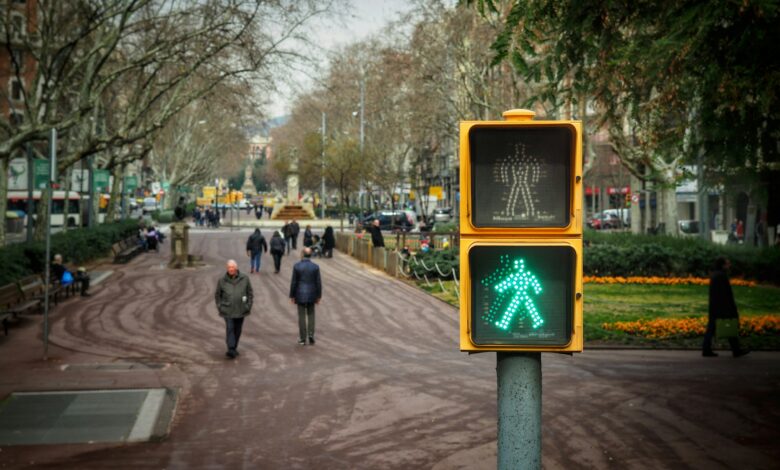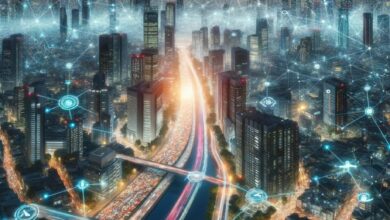
Urbanization means cities worldwide need better infrastructure to meet demand. Without modern technology, metro areas risk reduced productivity and displeasure from their residents. How can cities become more mobile and efficient for travelers? The future relies on artificial intelligence (AI) and other advanced technologies to reshape urban mobility. Consider these smart traffic management strategies and evolving practices.
How AI Is Transforming Traffic Management
Evolving urbanism means cities must adapt to more people on the roads and in public transit. Here are five examples of AI in modern traffic management.
Smart Cities
Smart cities are growing as technology makes a metro area’s inner workings more connected. Most of these towns are in Europe, as the continent constitutes eight of the top 10 spots on the 2023 Smart City Index (SCI) rankings. How do these places manage their traffic needs? Smart cities collect data on cars, pedestrians and cyclists to understand where congestion occurs most.
Researchers say radial basis function (RBF) networks could help smart cities manage traffic even better. A 2021 study examines deep RBF’s role in traffic intelligence to improve efficiency. This advanced technology lets cities better understand their travel patterns and make more conducive decisions. For example, the researchers say RBF networks outperform conventional methods through better traffic conditions and congestion predictions.
Parking Sensors
Dense urban areas make finding a parking spot challenging. The free spaces may be full, leaving you to search for paid lots or places far from your desired destination. The past few years have seen a sharp increase in parking frustrations, with drivers finding the task unnerving. A 2023 survey reveals that 73% of drivers say parking is stressful — 19 percentage points higher than in 2022.
How can cities alleviate parking issues? Drivers waste time and fuel by circling parking lots looking for an open space. One solution to reshaping traffic management is by installing parking sensors on cars. They determine if there are any open spaces in a lot and where they are. This technology also lets cities and facility owners better monitor occupancy levels in parking lots.
Traffic Light Management
For decades, traffic lights operated on timers. This fixed schedule is less able to adapt to traffic needs, leading to city congestion. AI and newer technologies have let cities better manage their traffic lights based on demand — not timers. Responsive signals have been critical for urban mobility and will remain essential in the future.
How have smart traffic signals changed urban areas? They are backed by AI and historical data. Their predictive algorithms can change the device’s green and red light times based on traffic patterns and IoT sensors. Moving traffic management to cloud-based systems has positively affected congestion by being a preventive measure.
Predictive Maintenance
Improving urban mobility with AI means taking a holistic approach and inspecting more minor details. Predictive maintenance of vehicles and city infrastructure is critical for reducing the risk of accidents and keeping people safe.
AI plays a role with advanced sensors, alerting the driver and manufacturer when something goes wrong in a car. Cities can implement similar technologies with roads and bridges to judge when these structures need maintenance. Storms or car accidents can damage infrastructure, so knowing when to perform upkeep improves longevity and mitigates traffic. Reacting instead of being proactive may mean longer lane closures and worse traffic conditions.
Advanced technologies have helped local officials and construction professionals maintain essential infrastructure. For example, a 2021 study examines neural networks and sensitivity analysis for bridge predictive maintenance. The artificial neural network demonstrates 65% accuracy and performs well when assigning deterioration grades. This promising technology means the future of AI and infrastructure management is bright.
Connected Vehicles
While infrastructure is critical, the vehicles themselves are crucial for traffic management and urban mobility. How can cars and trucks work with the technology around them to maximize efficiency? Newer models employ vehicle-to-vehicle (V2V) and other connectivity features to make city traffic more efficient. These cars contribute to the IoT ecosystem, and experts project that 400 million automobiles will have connective capabilities by 2025.
V2V aids urban mobility by enabling cars to share traffic information. Vehicles with V2V technology can detect better routes to avoid traffic and decongest the city’s busiest areas. While V2V is common, connectivity can also be seen through vehicle-to-grid (V2G), vehicle-to-cloud (V2C) and vehicle-to-device (V2D).
How Does Smart Traffic Management Benefit Cities?
Urban mobility is critical for drivers, pedestrians, cyclists and transit riders. Here are three ways people benefit from improved traffic management strategies.
Saving Time
Sitting in traffic isn’t what you have in mind for your morning commute, but it’s a reality for commuters worldwide. A 2022 study finds the average American spends about 51 hours in congestion. This number rises if you live in large metropolitan areas, with Chicago leading the way at 155 hours annually.
Smart traffic management means improved flow and less bumper-to-bumper traffic. You’ll get where you need to go faster while worrying less about city congestion.
Reducing Costs
Intelligent transportation systems help you find better routes to reach your destination. These optimized paths lead to less idle time and fuel consumption as you complete your commute. A well-planned route means you’ll reduce fuel costs, stress and the risk of accidents because your ride is much smoother than usual.
Releasing Fewer Emissions
Reducing time on the road means increased fuel efficiency and fewer emissions. The U.S. Department of Transportation says light-duty vehicles account for 58% of America’s transportation emissions, emphasizing the need for better traffic management. Idle cars sit in traffic while emitting greenhouse gases (GHGs) like carbon dioxide (CO2) and nitrogen oxides (NOx).
How do emissions change for smart cities? These metro areas benefit from newer technologies that consume less power. A 2022 study finds that smart cities in China have significantly reduced their CO2 emissions per capita due to energy savings between 2011 and 2018.
What Cities Are Implementing Smart Traffic Management?
Research and development are occurring nationwide, and innovative technologies are on the horizon. Here are a few examples of cities using AI for smart traffic management.
Moscow
Moscow is among the largest cities in Europe, and it has transformed its traffic management system through advanced signals. These devices are smart enough to monitor all traffic lights in Moscow and count the cars passing through intersections. Another innovative urban mobility feature is the signal at Tverskaya Zastava Square. This device lets pedestrians cross the road faster if the detected emissions exceed permitted levels.
Montreal
Montreal is another location where AI-backed traffic management is available. This eastern Canadian city deploys Kapsch TrafficCom technology to collect traffic data in the Notre Dame corridor. Montreal’s cameras capture footage of buses, cars and pedestrians to detect accidents, congestion and dangerous situations.
Singapore
Singapore is one of the few non-European locations in the SCI rankings, earning its spot through intelligent traffic management. The city-state takes advantage of integrated technology to monitor motorists throughout the area. The Intelligent Transport Systems (ITS) uses real-time information to respond to accidents and inform future policy changes. This technology is also helpful in alerting drivers using major roads when delays occur.
Promoting Urban Mobility Through Traffic Management
Traffic management will become more crucial as cities worldwide continue growing. People come to metro areas for urban mobility and may feel distressed if they constantly sit in congestion. AI-backed traffic management promotes healthy urbanization and efficiency for drivers, cyclists and other travelers.





